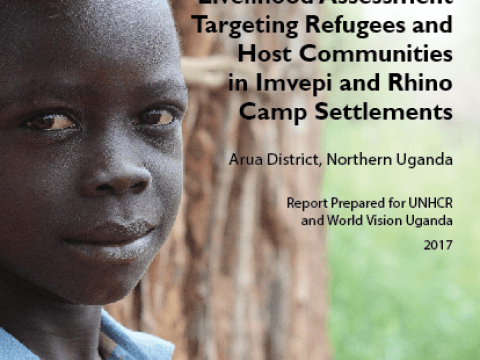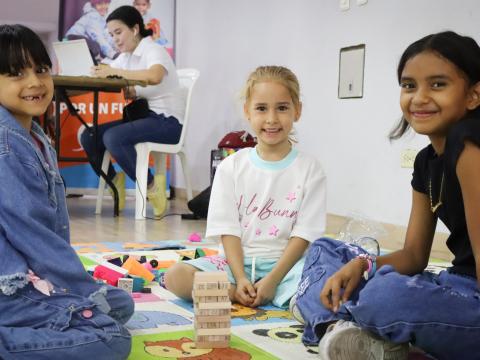Inter-Agency Livelihood Assessment Targeting Refugees and Host Communities in Imvepi and Rhino Camp Settlements
Download
A survey of 1,135 refugees and host community members living in and around refugee settlements in northern Uganda provides a detailed picture of life here.
Key findings:
- The majority of refugee households (62%) have more than 6 members.
- 62% of refugee households are headed by women.
- A lack of education limits job opportunities for refugees. 25% of refugees have never been to school. 44% only have a primary school education.
- 58% of refugee households do not have any form of regular income and rely solely on food assistance to survive.
- 94% of refugees were concerned about the availability of food.
7 Key conclusions and recommendations:
- The youth are the majority of the population and most of them are unemployed. There is a need to promote employment by bridging the needs of the labour market (supply side) and building the capacity of youth and employees (demand side). An in-depth assessment of the skills and labour requirements are therefore needed to promote marketable skills based on the labour market gaps and requirements now and in the future.
- Due to limited activities in the settlement, anecdotal evidence exists that some of the youth may be returning to South Sudan to participate in the conflict. There is a need to engage the youth in meaningful social and economic activities that will keep them engaged as well as earning income. Peacebuilding actions and messaging should be an integral part of every livelihood programme.
- There is also a need to promote economic activities among the refugee and host communities to boost income and self-reliance. Some of the refugees had shops in South Sudan and understand how to run businesses. Others were farmers and livestock keepers. Interventions to support restarting former livelihoods are needed to bring the refugees back to self-reliance and participate in the market economy.
- The markets in refugee and host community settlements are functional. They provide essential household items, although little economic activities are being undertaken in comparison to their potential. The refugees do not have meaningful economic activities and the host communities purchasing power has been significantly affected by drought. There is a need to inject cash into these markets to make them vibrant. Targeted safety net interventions targeting the ultra-poor and vulnerable groups should be considered to spur growth in these markets.
- Massive tree cutting for fuel consumption and construction has been witnessed in the settlement and surrounding area. From observation, the rate of harvesting surpasses the regeneration capacity. It is only a matter of time before the impact begins to be felt widely. Therefore, an environmental audit is needed to determine the magnitude of deforestation and regeneration. Urgent conservation measures need to be put in place to reverse the trend. It is worth exploring the promotion of alternative energy sources for cooking fuel, Farmer Managed Natural Regeneration practices, afforestation and reforestation activities (fast growing trees), and promotion of improved stoves.
- Most farmers are only practicing subsistence agriculture, largely rain-fed. With the impact of climate change, the rains are sporadic and unreliable, making crop farming risky. Climate Smart solutions such as drought resistant varieties, water use efficient irrigation systems, and conservation agriculture, among others, are much needed to promote year-round crop farming.
- There is a need to work closely and in coordination with the relevant government ministries to ensure technical skills and support in extension services are offered to refugee and host community populations.
Please download report for complete details, statistics


